As we move forward into 2024, I’m witnessing a remarkable shift towards energy-efficient heating and cooling systems within our homes. It’s no secret that the cost of energy is a significant part of my family’s budget, with HVAC systems often being the main contributor. Therefore, the adoption of efficient heating and cooling systems has become more than a passing trend—it’s a necessity for maintaining the comfort of our living spaces while managing energy costs effectively.
Technologies like heat pumps, which serve as both heating and cooling systems, are at the forefront of this transformation. They’re revolutionizing the way I maintain a comfortable home environment, offering a seamless, energy-efficient solution. Furthermore, the evolution of smart thermostats has shown great promise in enhancing energy efficiency, granting me the power to control my home’s climate from the palm of my hand. These innovations are the building blocks of a zero energy home, where optimized energy use and advanced HVAC systems work harmoniously to minimize energy consumption.
Key Takeaways
- Energy-efficient heating and cooling systems are key to reducing household energy costs.
- Advanced HVAC technologies play a crucial role in moving towards zero energy homes.
- Heat pumps offer a versatile and efficient solution for both heating and cooling needs.
- Smart thermostats are essential for personalizing home comfort and maximizing energy savings.
- 2024 emphasizes the importance of integrating energy efficiency into every aspect of home climate control.
Embracing Electric Heat Pumps in Modern Homes
As we lean into more sustainable living, it’s evident that one of the brightest stars in the constellation of energy-friendly home systems is the electric heat pump. These marvels not only heat your home during chilly winters but also cool your home in the blistering summer months. I’m continuously exploring the transformative impacts of such technologies, and trust me, electric heat pumps are a game-changer for both our comfort and our wallets.
Why Electric Pumps are the Future of Home Heating and Cooling
Let me tell you, the buzz around electric heat pumps isn’t just hot air. With their ability to transfer heat rather than generate it, they function with an astounding efficiency that traditional HVAC systems can only dream of. It’s an efficient system that makes sense not just from an environmental standpoint, but also from a practical, everyday living perspective.
The Advantages of Converting to Electric Heat Pumps
The list of benefits when switching to an electric heat pump is lengthy, but let’s distill it to the core perks. These units are adept at reducing energy costs and their design simplicity translates to fewer moving parts—which means less maintenance and more peace of mind. Moreover, by switching to this efficient heating system, homeowners also reduce their carbon footprint, which is something to feel good about every time you adjust your thermostat.
Electric Heat Pumps: A Win for Consumers and Energy Bills
I’ve studied the patterns of energy consumption and savings, and from what I’ve seen, electric heat pumps consistently come out on top. They save energy without compromising on performance. It’s a delightful paradox—enjoying a cool breeze on a hot day, or basking in warm comfort when it’s snowing outside, all while knowing that you are contributing to a reduced demand on the energy grid. Yes, the upfront cost might be a consideration, but the subsequent slashing of monthly utility bills is an undeniable economic victory for any homeowner.
The Department of Energy advises sealing your heating and cooling ducts, as unsealed ducts can be significant energy wasters, improving system efficiency by up to 20 percent.
So, if you’re contemplating how to adjust your home to the future of heating and cooling, think electric heat pumps. They’re not just a passing trend; they’re the efficient, eco-friendly norm for a reason.
Smart Thermostats: Personalized Comfort and Energy Savings
Imagine a world where your home instinctively understands your comfort needs while optimizing for energy saving—the era of smart thermostats has made this a reality. These dynamic devices are more than just a temperature control tool; they are the central hub for energy-efficient home HVAC systems. As I delve into the sophisticated realm of smart thermostats, I’m continually impressed by how they not only enhance the quality of home heating and cooling but also strategically reduce energy consumption.
The Evolution of Thermostats: How Intelligence Adds Efficiency
From manual dials to programmable models, thermostats have undergone a significant transformation. The latest smart thermostats represent the pinnacle of this evolution, offering unprecedented control over an HVAC system for your home. With built-in learning algorithms, these intelligent companions adjust your living environment to match your schedule and preference, all while using less energy than their predecessors. It’s like having a personal HVAC assistant that learns and adapts, ensuring maximum comfort without wastage.
Enhancing HVAC Performance with Smart Thermostat Technology
These days, smart thermostats are not just about maintaining a comfortable temperature—they’re about comprehensively understanding and managing your home’s climate. By monitoring and analyzing real-time data, smart thermostats can optimize the operation of efficient home HVAC systems. They’re programmed to make micro-adjustments throughout the day, which can lead to substantial decreases in overall energy expenses. The more we integrate these devices, the more we can enjoy a truly energy-efficient HVAC system that aligns with our modern eco-conscious lifestyle.
Smart thermostats benefit individual homes and reflect a broader shift toward a more energy-conscious society. The cumulative impact of widespread adoption of these devices has the potential to decrease the collective energy footprint significantly. It’s a powerful way of using more energy wisely rather than wastefully, and I believe this has massive implications for how we approach energy conservation collectively. We are, essentially, programming our living spaces for a more sustainable future.
There’s no doubt that the synergy between smart thermostats and our desire for more personalized, energy-efficient living is changing the game. Join me in embracing this intelligent technology that promises to reshape our energy habits for the better.
| Feature | Traditional Thermostats | Smart Thermostats |
|---|---|---|
| Adjustment | Manual | Automatic/Remote |
| Energy Monitoring | Limited or None | Detailed Reports & Suggestions |
| Energy Saving Potential | Basic | High |
| Learning & Adaptation | Non-existent | Self-Learning Algorithms |
| Integration with Smart Home | Not Compatible | Extensive Compatibility |
| User Interface | Basic | Intuitive & User-Friendly |
The Rise of Smart HVAC Systems in 2024
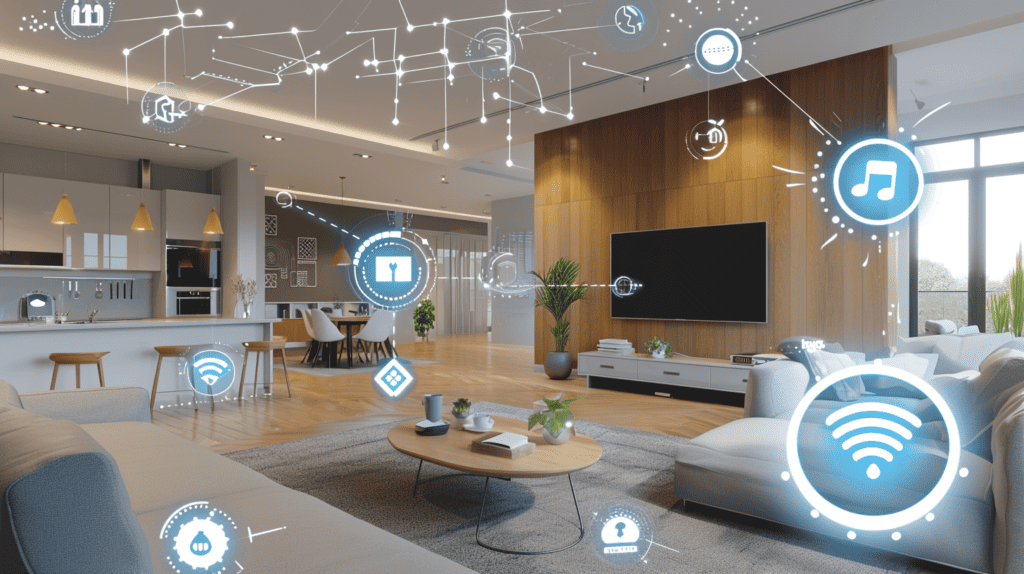
As I delve into the realm of home comfort, I’ve observed a remarkable trend: the proliferation of smart HVAC systems. These marvels of advanced technologies are redefining the way we experience superior comfort. It’s fascinating to watch as homeowners are actively choosing these energy-efficient heating and cooling systems not just for the promise of energy savings but for their ability to adapt to our personal needs and environmental concerns.
In my experience, one of the most appealing aspects of these intelligent systems is their premium service offerings. From remote diagnostics to AI-driven temperature control, smart HVAC systems are turning homes into bastions of efficiency. It’s gratifying to be part of this shift towards thoughtful consumption, where every kilowatt-hour is used to its fullest potential.
- Intuitive climate control that learns and adapts to your lifestyle
- Remote access for adjustments on the go
- Real-time energy consumption tracking
- Maintenance alerts that help prevent costly repairs
Here’s a comparison of traditional HVAC systems and their smart counterparts to give you a clearer picture:
| Feature | Traditional HVAC Systems | Smart HVAC Systems |
|---|---|---|
| Adjustability | Manual control with limited flexibility | Dynamic and automatic adjustments |
| Energy Consumption | Consistent use, less optimization | Energy-efficient operations with optimizations |
| Comfort Level | Constant settings may not reflect real-time needs | Customizable for individual comfort preferences |
| Maintenance | Scheduled, potentially overlook imminent issues | Predictive alerts for timely intervention |
I personally recommend considering the shift to smart HVAC systems as an investment in your home’s future. It’s a choice that delivers both energy savings and the sheer enjoyment of an atmosphere tailored to your definition of comfort.
Energy-Efficient Heating and Cooling Systems and Their Impact
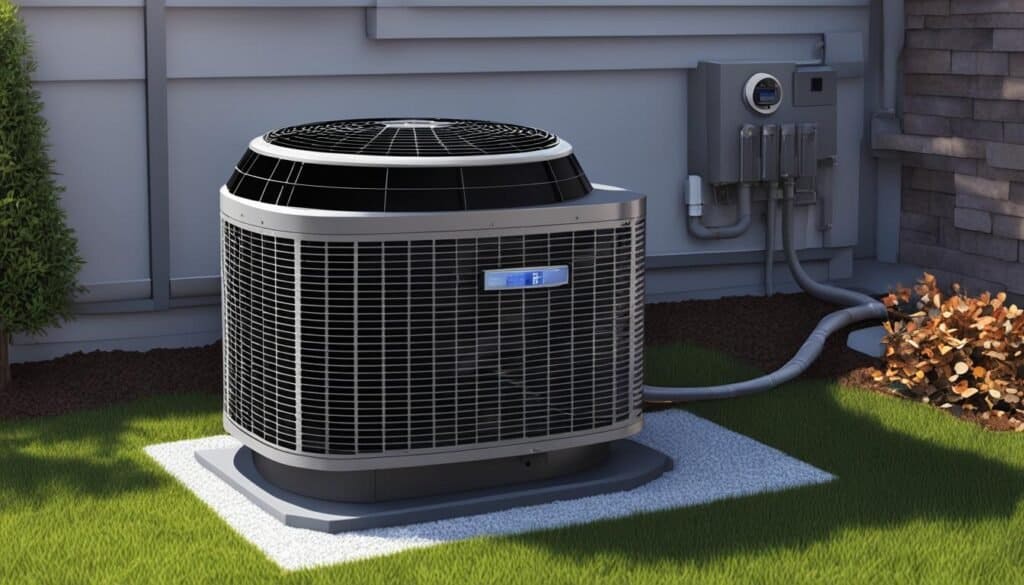
As I explore the latest in HVAC technology, I’m particularly impressed by the strides made in creating energy-efficient homes. High-efficiency heating and cooling systems are not just a modern convenience; they are a pivotal component in the quest to reduce our carbon footprint. The evolution of these systems and their meticulous design are tailored to minimize energy consumption, ensuring a harmonious balance between comfortable living and environmental responsibility.
High-Efficiency Systems and Their Role in Reducing Energy Waste
When I consider the vast amounts of energy required to heat and cool our homes, I am compelled to advocate for systems that prioritize high efficiency. These units have an exceptional energy efficiency rating, directly contributing to a significant reduction in energy waste. The benefits are twofold, helping homeowners save money while also fostering a sustainable lifestyle—an incredible win-win in my view.
Understanding SEER 2 Standards for Optimized Performance
SEER 2 standards are pivotal in our push towards an energy-efficient home. They aren’t just guidelines; they are essential benchmarks that ensure air conditioners and heat pumps uphold a gold standard of energy efficiency. By adopting systems that comply with these standards, homeowners can experience peace of mind, knowing their equipment is engineered to perform optimally, leading to lower energy consumption and a steadfast commitment to environmental excellence.
When I look at the impact of these efficient heating and cooling systems, I can’t help but be optimistic about the future of our planet and our ability to maintain comfort without compromise. Here’s a breakdown of how SEER 2 compliance compares to older models:
| System Type | Energy Efficiency Rating (SEER) | Estimated Annual Energy Savings |
|---|---|---|
| Older AC Model | 8-10 | — |
| SEER 2 Compliant Model | 15+ | Up to 47% |
| High-Efficiency Heat Pump | 15-20+ | Up to 50%+ |
By embracing systems with high efficiency and SEER 2 standards, individuals like myself are playing an active role in curbing energy consumption. The advantage is not just personal; our collective action translates into a larger movement towards preserving the environment—one efficiently heated or cooled home at a time.
Variable Refrigerant Flow (VRF) Systems: Precision Climate Control
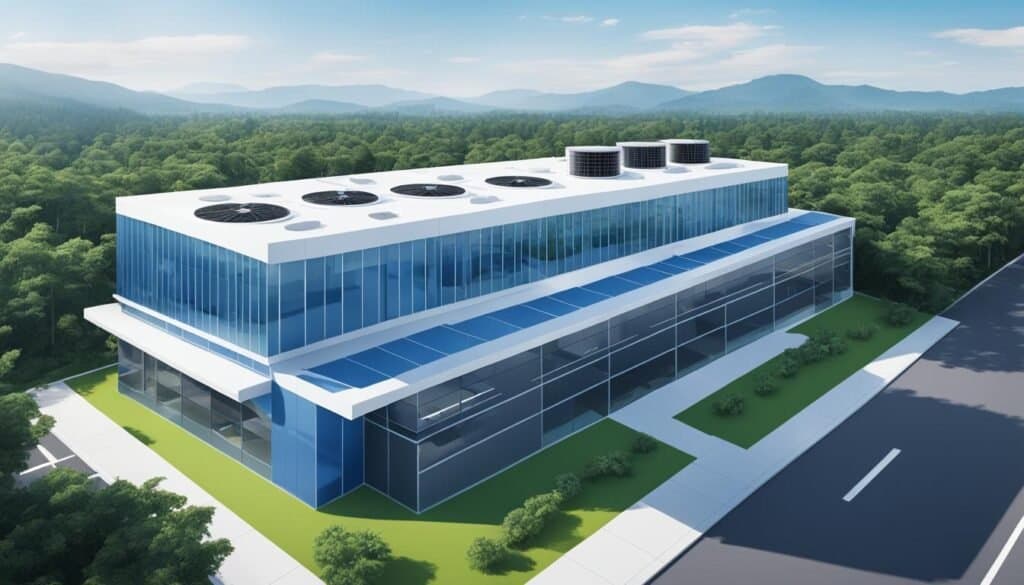
As a forward-thinking homeowner, I am continually looking for innovative ways to create a comfortable living environment while being kind to the planet. That’s why I’m excited about Variable Refrigerant Flow, or VRF systems. These advanced solutions are perfect for anyone seeking an energy-efficient heating and cooling system that offers precision climate control.
One of the highlights of VRF systems is their ability to operate at varying speeds, which allows for precise temperature regulation in different areas of a home. This means that a VRF system can cool the living room while simultaneously heating the bedroom, depending on individual preferences or occupancy.
Climate Experts recommend paying attention to system efficiency ratings such as SEER or AFUE when shopping for heating and cooling systems, as high-efficiency HVAC systems consume less energy and lower utility costs.
What’s more, the reduced environmental impact of these systems aligns perfectly with my environmental values. VRF systems are designed to use only the exact amount of energy needed at any given time, which significantly cuts down on waste. This not only translates to lower utility bills but also contributes to a healthier planet.
Let’s take a deeper look at why VRF systems are becoming a preferred choice for homeowners:
- They deliver targeted comfort where it’s needed most, minimizing energy consumption.
- VRF systems are remarkably quiet, a welcome advantage over conventional HVAC products.
- These systems are modular, meaning they offer exceptional scalability to meet the needs of different spaces, whether big or small.
And if we’re talking about overall efficiency, it’s worth noting that VRF technology allows for simultaneous heating and cooling with minimal energy loss. The flexibility and advanced control associated with these systems truly embody the next level of home climate management.
Take a look at this comparison of a traditional HVAC system versus a VRF system:
| Feature | Traditional HVAC System | VRF System |
|---|---|---|
| Energy Efficiency | Standard Efficiency | High Efficiency |
| Operational Noise | Loud | Quiet |
| Flexibility | Limited | Highly Flexible |
| Climate Control | Generalized | Precision Control |
| Environmental Impact | Higher | Reduced |
Ultimately, the adoption of VRF systems is not just about lowering energy bills or making a home more comfortable, it’s a testament to environmental stewardship and a commitment to future generations.
When I look at the advantages and the technology behind Variable Refrigerant Flow, it’s clear that these systems are not just a fleeting trend but a permanent fixture in the pursuit of an eco-conscious and efficient home.
Whether you’re building a new home or retrofitting an existing one, considering a VRF system could be a game-changer for both your indoor comfort and your ecological footprint. It’s a smart investment in a smarter home.
Low Global Warming Potential (GWP) Refrigerants: Cooling with a Conscience
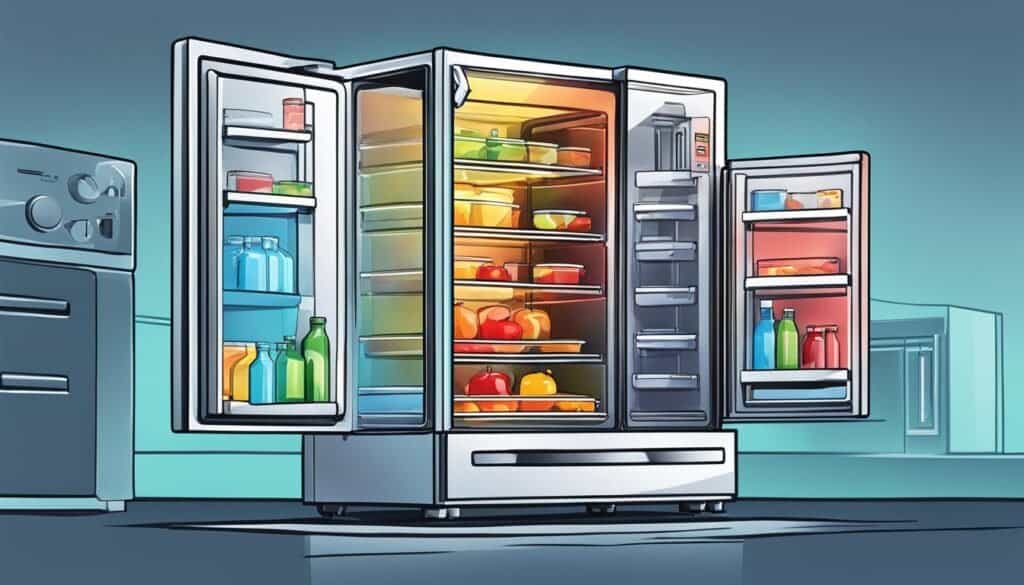
Our commitment towards environmental stewardship and climate change action is exemplified by the HVAC industry’s move to Low Global Warming Potential (GWP) refrigerants. By choosing these eco-friendly refrigerants, I’m not only optimizing my HVAC system’s efficiency but also contributing to a greener planet. The switch to substances that have a minimal impact on the atmosphere is a significant milestone in developing sustainable HVAC technology.
The Transition to Eco-Friendly Refrigerants in HVAC Systems
The wind of change in the industry is palpable as I watch manufacturers and technicians adapt to the eco-friendly solutions that Low GWP refrigerants provide. It’s a testament to the industry’s resilience and forward-thinking approach, with each of us playing a vital role in this green revolution. The new creed is simple: deliver cooling solutions that prevent potential harm to the environment.
What the Shift to Low-GWP Refrigerants Means for Consumers
For consumers like me, the transition to GWP refrigerants means investing in a future where our comfort doesn’t come at the expense of the environment. Not only do these refrigerants offer eco-friendly solutions, but they also align with the latest green solutions mandated by evolving regulations.
| Traditional Refrigerants | Low GWP Refrigerants |
|---|---|
| Higher Global Warming Potential | Reduced contribution to global warming |
| Phased out by regulations | Compliance with current and upcoming regulations |
| Potential for environmental damage | Eco-friendly impact |
| Conventional system operation | Enhanced efficiency and performance |
The clear advantages of Low GWP refrigerants not only ease my mind regarding environmental aspects, but also reassure me of the sustainability and longevity of my HVAC systems. As a consumer, I’m left with a sense of pride in contributing to a sustainable world, one cool breeze at a time.
Predictive Maintenance: AI’s Role in HVAC Longevity
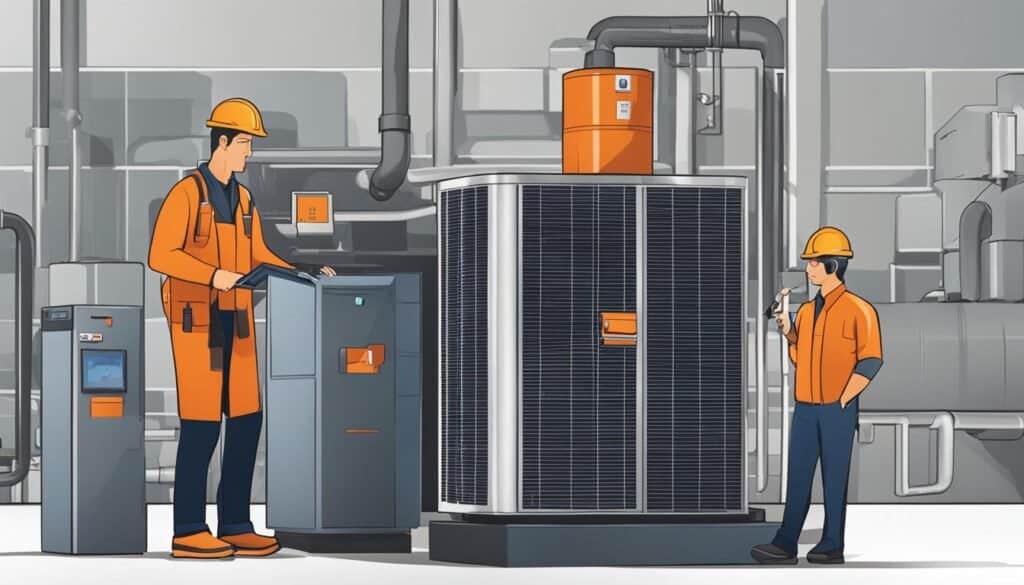
As we delve deeper into the potential of AI technology within the realm of HVAC systems, the concept of Predictive Maintenance emerges as a game-changer. It’s all about utilizing data-driven insights to foresee and mitigate potential issues. This innovative approach to maintenance is revolutionizing how we ensure HVAC longevity, optimize functionality, and avert HVAC emergencies. Let’s explore how AI is taking preventive service contracts to the next level, subsequently resulting in reduced downtime for HVAC systems.
AI and Predictive Maintenance: Avoiding HVAC Breakdowns Before They Happen
Imagine an HVAC system that informs you of a potential fault before it disrupts your comfort. That’s exactly what AI-driven Predictive Maintenance offers. By monitoring performance and utilizing advanced algorithms, AI proactively indicates when a system component requires attention, well in advance of an actual breakdown. This not only prevents the inconvenience of unexpected system failures but also significantly extends the lifespan of the equipment.
The Financial Benefits of Predictive HVAC Maintenance
From a financial perspective, the advantages of AI-enabled Predictive Maintenance are substantial. Homeowners can relish in the assurance of lowered domestic expenses courtesy of fewer emergency repairs and longevity of their system. It’s a win-win scenario that speaks volumes in favor of proactive over reactive maintenance.
| Traditional Reactive Maintenance | Predictive Maintenance With AI Technology |
|---|---|
| Unexpected breakdowns | Anticipated interventions prevent emergencies |
| High repair costs from emergency calls | Cost savings from planned maintenance work |
| Possible secondary damages to other components | Isolated maintenance preserves system integrity |
| Frequent system downtime | Minimized disruptions through scheduled servicing |
| Shortened equipment lifespan | Enhanced equipment longevity through preventive care |
The integration of Predictive Maintenance into the sphere of HVAC care, empowered by AI Technology, is reshaping how we perceive and approach the durability and efficiency of our heating and cooling systems. As someone who champions both technological advancements and pragmatic home management, I can attest to the profound impact of AI in reducing the incidence of HVAC emergencies, catalyzing an era of unprecedented HVAC longevity, and cementing preventive service contracts as the standard for future-forward, savvy homeowners.
Understanding the Financial Implications of New HVAC Systems
When it comes to upgrading to a modern HVAC system, homeowners often face a dilemma between the initial investment and the potential energy savings. It’s not merely a purchase; it’s a smart investment for both comfort and long-term financial picture. Let’s delve into the reasons that make investing in energy-efficient heating and cooling systems a financially savvy move.
Why Investing in a Modern HVAC System Makes Financial Sense
It’s well-understood that a modern HVAC system, while requiring a substantial upfront cost, can drastically reduce energy usage over time. This decrease in energy consumption is not just beneficial to our wallets but also aligns with the rising emphasis on sustainability. High efficiency in these cutting-edge systems equates to less energy wasted, and that’s a direct translation to savings on your monthly utility bills.
Efficiency vs. Upfront Costs: Navigating HVAC Investments
Making the switch to an energy-efficient heating and cooling system can appear daunting at first glance due to the higher upfront costs. However, when you break down the numbers and look at the long-term financial implications, the picture becomes brighter. Reduced energy usage means that over time, these costs can be recouped, often several times over, during the lifespan of the system. So, while the initial investment may be high, the return on investment is compelling when it comes to modern, energy-efficient HVAC units.
It’s essential to remember that an energy-efficient system is a key player in the long-term financial health of your home. The cumulative energy savings can be a substantial sum, effectively paying back the initial investment while continuing to keep your savings intact.
As we continue to move towards more sustainable living choices, the focus on energy consumption and its financial implications becomes more pronounced. By choosing a modern HVAC system, we’re not only ensuring a healthier environment but also fortifying our financial futures against the rising costs of energy.
The Advantages of Energy Star-Certified Mini Split Heat Pumps
When I decided to optimize my home for better energy efficiency, I was drawn to the remarkable benefits of ENERGY STAR-certified mini split heat pumps. I have discovered firsthand the impact of these powerful, efficient heating and cooling systems. Not only do they provide a tailored approach to climate control, but they also advocate for significant energy savings and a reduction in greenhouse gas emissions.
Here’s what I’ve learned about these innovative systems:
- ENERGY STAR-certified mini split heat pumps are far more efficient than traditional HVAC systems, cutting down on energy consumption and cost.
- Their design is conducive to climate protection, yielding lower greenhouse gas emissions and supporting our global environment.
- As a user, I take pride in knowing that my efficient heating and cooling system contributes positively to both my wallet and the planet.
Take a look at this comparison table:
| Feature | ENERGY STAR-Certified Mini Split Heat Pump | Traditional HVAC System |
|---|---|---|
| Energy Efficiency | High (reduced energy usage) | Lower (higher energy usage) |
| Climate Protection | Reduces greenhouse gas emissions | Standard emissions |
| Cost-Effectiveness | Long-term savings | Higher operational costs |
| Customized Comfort | Targeted heating and cooling | Less precise temperature control |
Choosing an ENERGY STAR-certified system was a decision I made for both my home’s energy efficiency and my participation in a larger movement for climate protection. If you’re contemplating an upgrade to your heating and cooling system, considering a mini split heat pump could be the best step towards an energy-smart home.
With their adaptability to different spaces and advantageous features, these systems epitomize the modern, environmentally aware mindset that we all should adopt as our societal responsibility to the Earth.
How the 2024 Efficiency Standards Affect Heating and Cooling Systems
As we edge closer to 2024, the panorama for homeowners is shifting significantly with the implementation of new efficiency standards. These standards are specifically designed to enhance the sustainability and performance of heating and cooling systems. Achieving these standards means embracing energy-efficient heating and cooling systems that not only fulfill the regulated requirements but also propel us towards responsible energy consumption and eco-friendly living spaces.
The cornerstone of the new criteria is the introduction of the SEER 2 (Seasonal Energy Efficiency Ratio 2) standard, which is set to replace the older SEER ratings. SEER 2 represents a more stringent measure of an air conditioning system’s efficiency over an average cooling season. For homeowners, this green transition is made smoother through incentives for upgrading to systems that align with the upcoming eco-friendly changes. These systems are not only better for the environment but offer long-term savings on energy costs.
| Feature | Benefit | Impact |
|---|---|---|
| Higher SEER 2 Rating | Reduced Energy Consumption | Lesser Environmental Footprint |
| Advanced HVAC Technology | Improved System Performance | Enhanced Indoor Air Quality |
| Eco-Friendly Refrigerants | Lower Global Warming Potential | Supports Climate Change Initiatives |
The dialogue around 2024 efficiency standards is not merely technical but ethical too, encouraging homeowners like myself to consider the implications of our choices. By selecting systems that are compatible with these new standards, we take active steps towards curbing energy wastage and promoting environmental health. The future looks promising as these standards herald a wave of sophisticated, cost-effective, and energy-efficient heating and cooling solutions to carry us forward.
GREEN HVAC: Eco-Friendly Heating and Cooling Innovations
As we venture deeper into an era where environmental sustainability isn’t just valued but expected, the HVAC industry is seeing groundbreaking progressions towards greener practices. Innovators in the field are devising GREEN HVAC solutions that not only promise to revolutionize the way we live but also aim to significantly reduce our carbon footprint. These advances are more than just technological triumphs; they are a beacon of hope for a more sustainable future.
How HVAC Industry Innovations Contribute to Environmental Sustainability
I’ve seen first-hand how the integration of eco-friendly heating and cooling innovations such as VRF technology, Smart Thermostats, and AI-based Predictive Maintenance are setting new benchmarks for performance while upholding commitments to environmental responsibility. These innovations are pivotal in transitioning traditional HVAC systems to greener alternatives, cutting down on energy use and reducing carbon emissions drastically.
The Role of Green HVAC Solutions in Reducing Carbon Footprint
It’s inspiring to see the adoption of low-GWP refrigerants and Energy Star-certified heat pumps not just as recommended alternatives but as industry standards. These green HVAC solutions are fundamental to our collective goal of carbon footprint reduction. They are not just part of an eco-friendly trend; they are setting the pace for what will eventually become the industry norm.
| Feature | Environmental Benefit | Consumer Impact |
|---|---|---|
| Low-GWP Refrigerants | Reduces potential for ozone depletion | Helps meet eco-conscious consumer demands |
| VRF Systems | Decreases overall energy consumption | Provides precise temperature control and cost savings |
| ENERGY STAR-Certified Systems | Lowers greenhouse gas emissions | Reduces energy bills and qualifies for tax rebates |
The maturity of green HVAC solutions marks a commendable shift in the tide as we all work towards a more sustainable tomorrow. By endorsing and adopting these advancements, we’re not just enhancing our immediate living environments — we’re actively contributing to the global initiative of environmental sustainability.
Conclusion on Energy-Efficient Heating and Cooling Systems
In reflecting on the progressive strides made in HVAC technology as we approach 2024, I am convinced that we are at the cusp of a revolutionary shift toward energy-efficient HVAC systems. The focus on developing solutions that conserve energy and slash energy consumption signals a transformational period for sustainable living. We have observed the emergent popularity of smart thermostats and electric heat pumps, which are fast becoming the gold standard for efficient heating and cooling. These innovations are tailored to reduce utilitarian expenses while fostering environmental sustainability—a dual victory for eco-conscious consumers and our planet.
As someone who values the essence of a home that harmonizes with the environment, I am particularly enthusiastic about the adoption of systems equipped with low-GWP refrigerants and compliance with SEER 2 standards. These advancements highlight the potential for significantly reducing our carbon footprints and pivot us closer to the target of sustainable living. They underscore the capacity for each of us to contribute to the greater good while enjoying the comforts of home—and, importantly, without the pressure of exorbitant utility bills.
My outlook for the immediate future of home climate control is rooted in a strong belief that we, as homeowners, stand to benefit immensely from these technologies. Not only do they promise to save energy and lower utility bills for us, but they also ensure that we are active participants in the global thrust toward environmental sustainability. Indeed, there is much to look forward to in the realm of heating and cooling innovations, and I am excited to witness their positive impact on our homes and our world in 2024 and beyond.
FAQ on Heating Systems and Geothermal Heat
Q: How can a ductless system be an efficient heating and cooling solution for your home?
A: A ductless system, also known as a ductless mini-split system, works without a network of hidden ducts as in traditional HVAC systems. It is an energy-efficient heating and cooling solution made up of an indoor and outdoor unit that helps warm or cool your home depending on the need. The main reason why they are particularly efficient is that they avoid the energy losses associated with ductwork. Therefore, a ductless system can be a great choice if you are looking for an energy-efficient heating and cooling system.
Q: What is a geothermal heat pump and how it can heat and cool your home?
A: A geothermal heat pump, also known as geothermal system, leverages the consistent temperature of the earth as the exchange medium instead of the air temperature just like the air-source heat pumps. Hence, they are highly efficient as they do not have to work as hard to warm or cool your home. It is one of the most energy-efficient heating and cooling systems, according to the Department of Energy. Therefore, if your goal is to have an energy-efficient home, this type of heat pump should definitely be considered.
Q: What is an air-source heat pump and how does it function?
A: Air-source heat pumps use the air-style system where heat is moved from cool spaces to warm ones making the cool space cooler and the warm space warmer. They extract heat and distribute it through ducts, making them efficient for heating and cooling homes. With ductless mini-split heat pump systems, they even offer more flexibility as no ductwork is required. Therefore, air-source heat pumps can be a very efficient heating system for your home.
Q: What is energy efficient hvac system?
A: An energy efficient HVAC system is a unit that utilizes less energy to operate while providing a level of service or comfort equivalent to less-efficient units. This helps save money on energy costs and improve environmental sustainability. Energy efficient systems include energy efficient heating and cooling options such as geothermal heat pumps, air-source heat pumps, and energy efficient air conditioners.
Q: Why choose an efficient air conditioner system for your home?
A: Choosing efficient air conditioners can result in significant energy savings, reducing both your carbon footprint and your energy bills. These type of systems typically have a higher Annual Fuel Utilization Efficiency (AFUE), a type of energy efficiency measure for HVAC systems. Plus, efficient air conditioner systems can distribute cool air more effectively throughout your home, leading to consistent and comfortable temperatures..
Q: How can geothermal systems provide efficient heating and cooling?
A: Geothermal systems, a type of heat pump, harness the stable temperature of the earth to cool and heat your home. They are highly efficient because they leverage the steady underground temperatures and don’t have to work hard to increase or decrease heat. This leads to lower energy consumption and efficiency greater than many conventional heating and cooling systems.
Q: What should be considered when finding the most efficient heating system for your home?
A: When finding the most efficient heating system for your home, consider the climatic condition of your region, size of your home, insulation, and your budget. Plus, consider the type of energy source you have access to such as gas, electricity, or geothermal. Do your research and consider energy efficient options like air-source heat pumps, geothermal systems, and energy efficient air conditioning units.
Q: What types of heating and cooling options are there for 2024?
A: In 2024, the range of efficient heating and cooling options should include air-source heat pumps, geothermal systems and ductless mini-split systems. These systems are considered energy efficient because they transfer heat rather than burning fuel to generate it, which significantly reduces energy usage. As technology continues to improve, these systems are expected to be more durable and efficient.
Q: Why choose an efficient system to cool your home?
A: Choosing an energy efficient system to cool your home can result in significant energy savings, decrease your impact on the environment, and keep you comfortable during the hot summers. Energy-efficient systems like air-source heat pumps and energy-efficient air conditioners use less energy to cool your home which means lower energy bills for you and less strain on the environment.
Q: What is the significance of ductless mini-split systems in efficient heating and cooling for your home?
A: Ductless mini-split systems are crucial in efficient heating and cooling for your home. They provide heating and cooling to individual rooms without requiring ductwork, which can result in energy loss. These systems can be controlled separately for each room, enabling even distribution of heat and cool air throughout your home and leading to an energy efficient home.

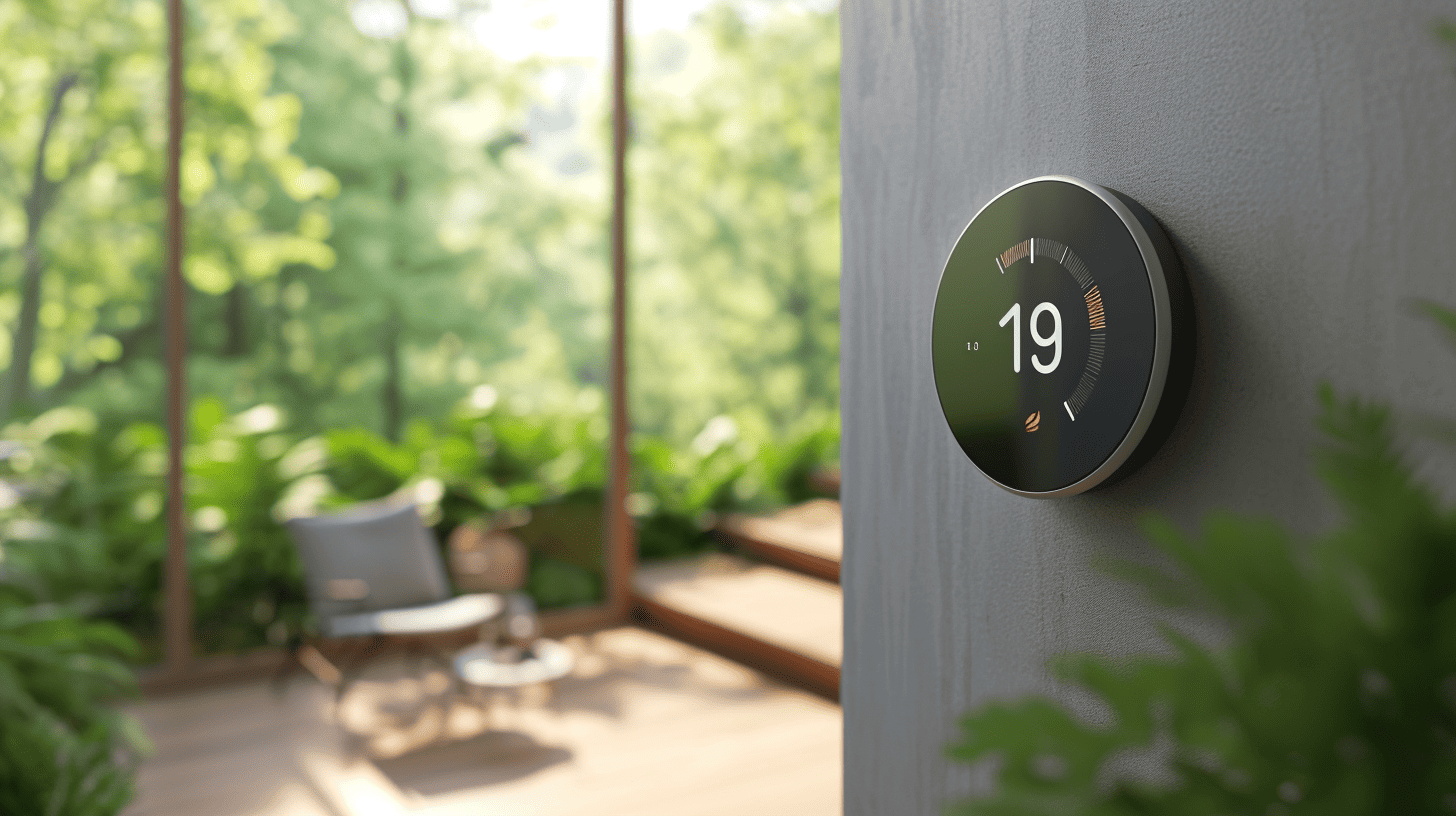



Leave a Reply